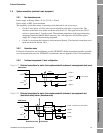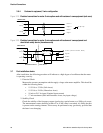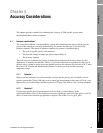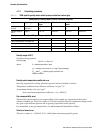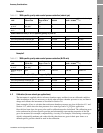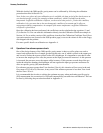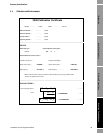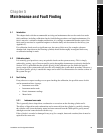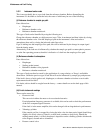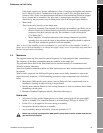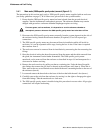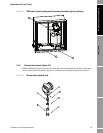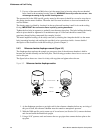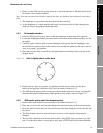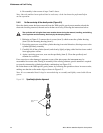
Installation and Configuration Manual 35
SpecificationMaintenance and Fault Finding
Chapter 5
Maintenance and Fault Finding
5.1 Introduction
This chapter deals with the recommended servicing and maintenance that can be carried out under
field conditions, including calibration checks, fault-finding procedures and simple maintenance. If a
fault is traced to a reference chamber malfunction, it is strongly recommended that the repair of the
faulty unit be restricted to a qualified engineer or that the faulty unit be returned to the factory (see
Appendix C).
If a calibration check reveals a significant error, the cause of this error (for example, reference
chamber leak, deposition on the vibrating cylinder) should be thoroughly investigated before any
re-calibration attempt is made.
5.2 Calibration check
It is normally good practice to carry out periodic checks on the system accuracy. This is simply
achieved by passing a gas of known specific gravity through the instrument as previously detailed in
Section 2.6. It is preferable that the specific gravity of this calibration gas lies within the specific
gravity range of the system under test since this will simplify the system check procedure. However, a
gas whose specific gravity is outside this range can be used if its characteristics are similar to those of
the system line gas.
5.3 Fault finding
If any adverse or suspect readings occur upon checking the calibration, the possible causes for this
can be summarized into 4 groups:
• Instrument over-reads
• Instrument under-reads
• Erratic instrument readings
• Meter faults
5.3.1 Instrument over-reads
This is generally due to deposition, condensation or corrosion on the vibrating cylinder walls.
The effects of deposition and condensation can be removed from the cylinder by carefully cleaning
the cylinder walls (once the density meter has been removed from the 3098 specific gravity meter)
although corrosion cannot be dealt with this way.
If the cylinder is corroded or damaged in any way (for example, dents and scratches) then it must be
replaced with a new unit.



